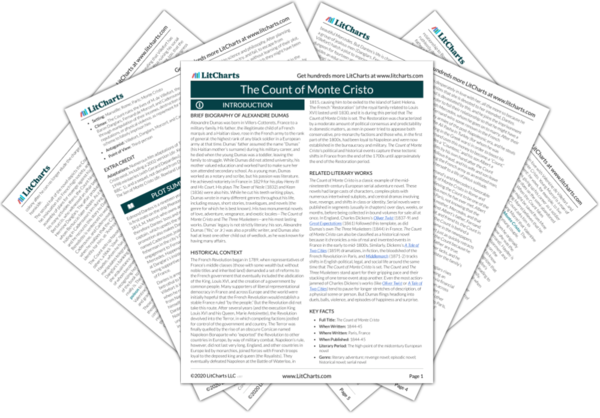LitCharts assigns a color and icon to each theme in The Count of Monte Cristo, which you can use to track the themes throughout the work.
Justice, Revenge, and God’s Will
Changes of Identity and Station
Love, Devotion, and Redemption
The Domestic and the Foreign
